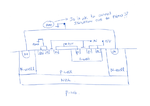kb81
Newbie level 4
Suppose I have a bunch of isolated PMOS/NMOS devices inside and NWELL/NBL tub. What voltage should the NWELL/NBL tub be connected to? So far I have usually seen the tub connected to the highest voltage seen by devices in the tub. For example if the device is an isolated inverter connected between PGND and PVDD then the tub is connected to PVDD. But what is the disadvantage of connecting the tub to PGND? After-all the enclosed P+ inside the tub is also at PGND so the diode between the NTUB and the enclosed P well will not be forward biased - correct?
Would appreciate your inputs - thank you!
Would appreciate your inputs - thank you!

